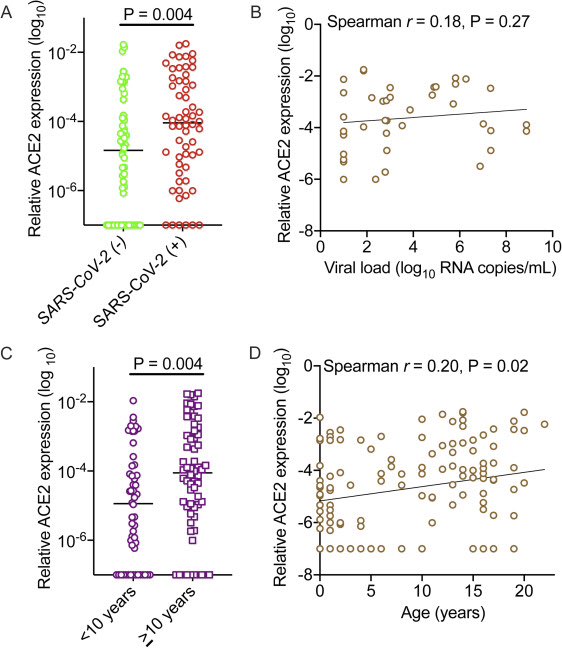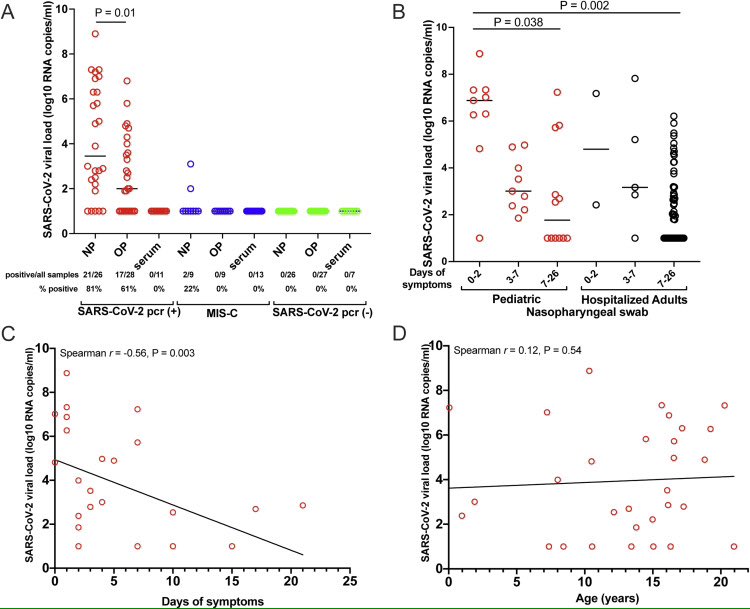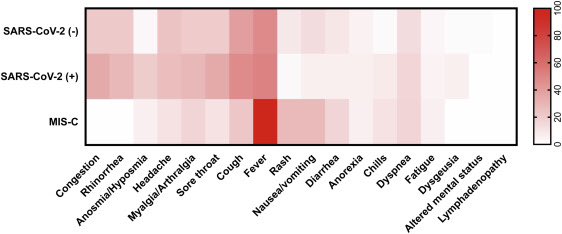(1/14) Very important viral load & susceptibility study of 192 children (49 positive for #SARSCoV2, 18 with MIS-C, 125 negative).
Despite having generally mild symptoms, children who tested positive had a viral load similar to adults with severe #COVID19. https://www.jpeds.com/article/S0022-3476(20)31023-4/fulltext">https://www.jpeds.com/article/S...
Despite having generally mild symptoms, children who tested positive had a viral load similar to adults with severe #COVID19. https://www.jpeds.com/article/S0022-3476(20)31023-4/fulltext">https://www.jpeds.com/article/S...
(2/14) ACE2 gene expression was examined in all children, and was higher in children who tested positive for #SARSCoV2 and those with MIS-C, than in children who tested negative.
However, ACE2 expression did not correlate with viral load.
However, ACE2 expression did not correlate with viral load.
(3/14) This suggests that increased ACE2 expression may be associated with increased susceptibility to infection.
However, once infected, children have a similar viral load despite any differences in ACE2 expression.
However, once infected, children have a similar viral load despite any differences in ACE2 expression.
(4/14) Children less than 10 years old had lower ACE2 expression compared with older children.
This suggests younger children may be less susceptible to infection than older children, and that more exposure may be required for them to become infected.
This suggests younger children may be less susceptible to infection than older children, and that more exposure may be required for them to become infected.
(5/14) The authors wrote: "children can carry high levels of virus in their upper airways, particularly early in an acute SARS-CoV-2 infection, yet they display relatively mild or no symptoms."
(6/14) They noted: "there was no age correlation with viral load, indicating that infants through young adults can carry equally high levels of virus."
(7/14) The authors concluded: "[f]rom an infection-control perspective, it is critical to identify infected children early for quarantine purposes."
(8/14) With regard to schools, the authors wrote that screening children based on symptoms or their temperature will likely be ineffective.
(9/14) There was generally very little difference in symptoms between the children who had mild #COVID19, and the children who were evaluated for other respiratory illnesses (the children who tested negative).
(10/14) Instead, "infection control measures should minimize the possibility of viral spread, with focus on strategies including social distancing precautions, mask use, and/or remote learning."
(11/14) "Moreover, schools could screen all students for SARS-CoV-2 infection and establish routine screening protocols."
(12/14) "Without infection control measures such as these, there is significant risk that the pandemic will persist, and children could carry the virus into the home, exposing adults who are at higher risk of developing severe disease."
(13/14) "Although transmissibility was not assessed in this study, children with high viral loads and non-specific symptoms including rhinorrhea and cough can likely transmit SARS-CoV-2 as easily as other viral infections spread by respiratory particles."
(14/14) "If schools were to re-open fully without necessary precautions, it is likely that children will play a larger role in this pandemic."
Summary: in this study, despite having generally mild symptoms, children infected with #SARSCoV2 had a viral load similar to adults with severe #COVID19. Viral load did not differ by age, although young children may be less susceptible to infection. https://threadreaderapp.com/thread/1296334190955261952.html">https://threadreaderapp.com/thread/12...

 Read on Twitter
Read on Twitter




